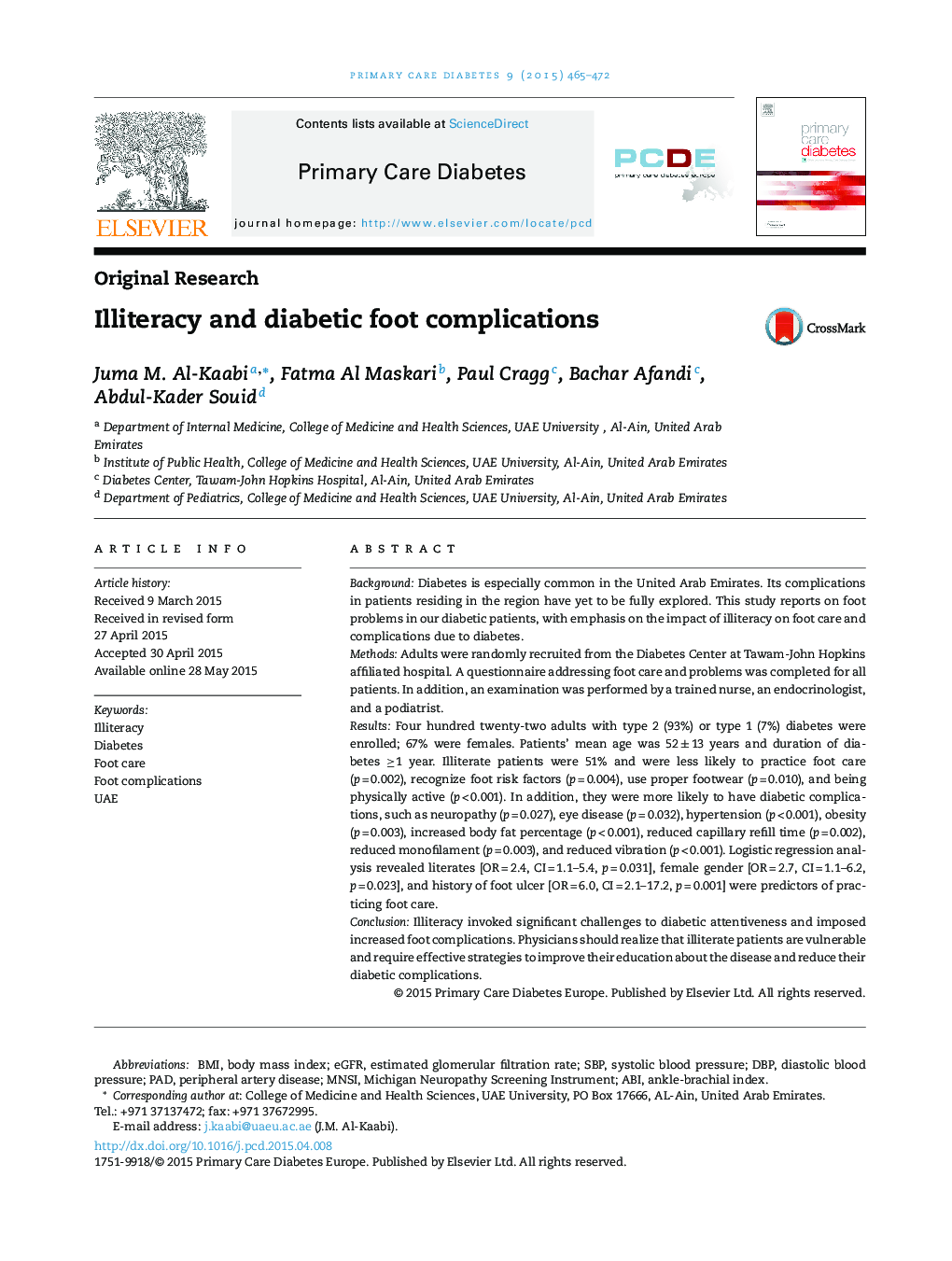| Article ID | Journal | Published Year | Pages | File Type |
|---|---|---|---|---|
| 2675436 | Primary Care Diabetes | 2015 | 8 Pages |
•Strong correlation between illiteracy and diabetic foot care.•Illiteracy affects negatively the diabetic foot care.•Developing novel strategies in illiterate diabetic patients are vital.
BackgroundDiabetes is especially common in the United Arab Emirates. Its complications in patients residing in the region have yet to be fully explored. This study reports on foot problems in our diabetic patients, with emphasis on the impact of illiteracy on foot care and complications due to diabetes.MethodsAdults were randomly recruited from the Diabetes Center at Tawam-John Hopkins affiliated hospital. A questionnaire addressing foot care and problems was completed for all patients. In addition, an examination was performed by a trained nurse, an endocrinologist, and a podiatrist.ResultsFour hundred twenty-two adults with type 2 (93%) or type 1 (7%) diabetes were enrolled; 67% were females. Patients’ mean age was 52 ± 13 years and duration of diabetes ≥1 year. Illiterate patients were 51% and were less likely to practice foot care (p = 0.002), recognize foot risk factors (p = 0.004), use proper footwear (p = 0.010), and being physically active (p < 0.001). In addition, they were more likely to have diabetic complications, such as neuropathy (p = 0.027), eye disease (p = 0.032), hypertension (p < 0.001), obesity (p = 0.003), increased body fat percentage (p < 0.001), reduced capillary refill time (p = 0.002), reduced monofilament (p = 0.003), and reduced vibration (p < 0.001). Logistic regression analysis revealed literates [OR = 2.4, CI = 1.1–5.4, p = 0.031], female gender [OR = 2.7, CI = 1.1–6.2, p = 0.023], and history of foot ulcer [OR = 6.0, CI = 2.1–17.2, p = 0.001] were predictors of practicing foot care.ConclusionIlliteracy invoked significant challenges to diabetic attentiveness and imposed increased foot complications. Physicians should realize that illiterate patients are vulnerable and require effective strategies to improve their education about the disease and reduce their diabetic complications.
